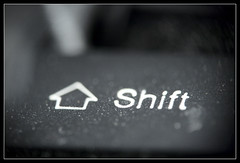A version of this post was originally posted 17 November 2009 as part of the character arcs series.
Emotions are important in fiction and can be hard to get right. After highly emotional scenes, for me, the next most difficult type of emotion to convey is multiple emotions in a single scene. Although most passions are composed of multiple emotions, we typically don’t experience, say, love, ambivalence and annoyance all the same time. But sometimes we need our characters to.
Typically, these evolving emotions are easier to handle with constant stimuli/input to create these emotional reactions (as in a scene). It’s more of a challenge in a sequel: what comes after the scene—the emotional response. However, the sequel also has a structure that can help with this kind of character arc.
In Scene & Structure, Jack Bickham gives a structure for the sequel: Emotion – Thought – Decision – Action (which leads to another scene). The Emotion is the initial response to the events of the scene and its Disaster. When the character moves past the initial emotion, they think through the events, their response and their options in the Thought phase. This ultimately leads to a Decision, which takes the character to another Action.
Not all the steps of the sequel are necessary. In fact, the sequel itself might not be necessary—depends on the pacing and whether the emotional reaction constitutes a change. But when the character is going through a major change, we can spend a little more time here. And this is where we motivate the next action.
When an emotional change in the sequel follows the full steps of the sequence, we know that there’s a logical progression of the events of the sequel. By moving through these steps, we can lead the characters and the readers through the steps of the change and create a compelling, convincing change.
 For example, if we need our character to go from shocked after the last disaster to furious in the sequel, we start with that initial emotional response—the shock. We don’t have to spend a long time exploring the shock, especially if that’s the kind of reaction you’d expect in light of the disaster. Once we create a vivid picture of the shock (and that’s a toughie, since it’s characterized by the absence of feeling, really), we can give the character a minute to get her bearings again.
For example, if we need our character to go from shocked after the last disaster to furious in the sequel, we start with that initial emotional response—the shock. We don’t have to spend a long time exploring the shock, especially if that’s the kind of reaction you’d expect in light of the disaster. Once we create a vivid picture of the shock (and that’s a toughie, since it’s characterized by the absence of feeling, really), we can give the character a minute to get her bearings again.
Once she’s had some time to recover, she’s ready for the Thought phase. Here we can explore exactly why she’s so surprised—because, say, this revelation is something that the hero could have told her. It’s something she would understand and would have even made her happy, if he had just told her, and he knew that—but he’s chosen to lie to her about it the whole time they’ve known one another.
And that can lead us to the Decision. The Decision can be about the coming Action and set up the next scene—or it can be a further decision about the emotional response. You know what? He should have told her. How dare he not? And if he could lie about that, what else about their relationship was a lie?
And now she’s mad.
What do you think? How have you handled drastic emotional changes in sequels?
Photo by Dan Foy
